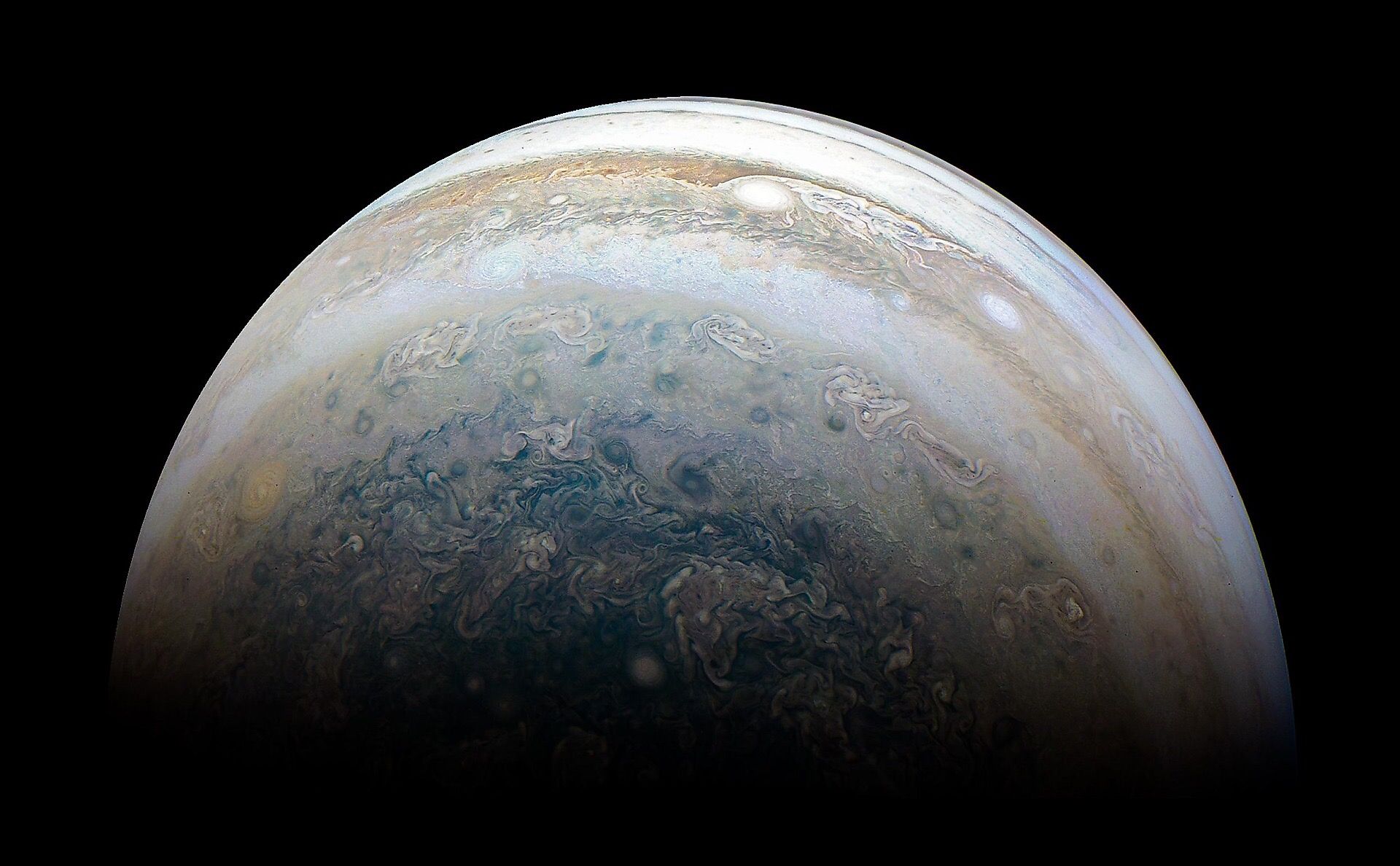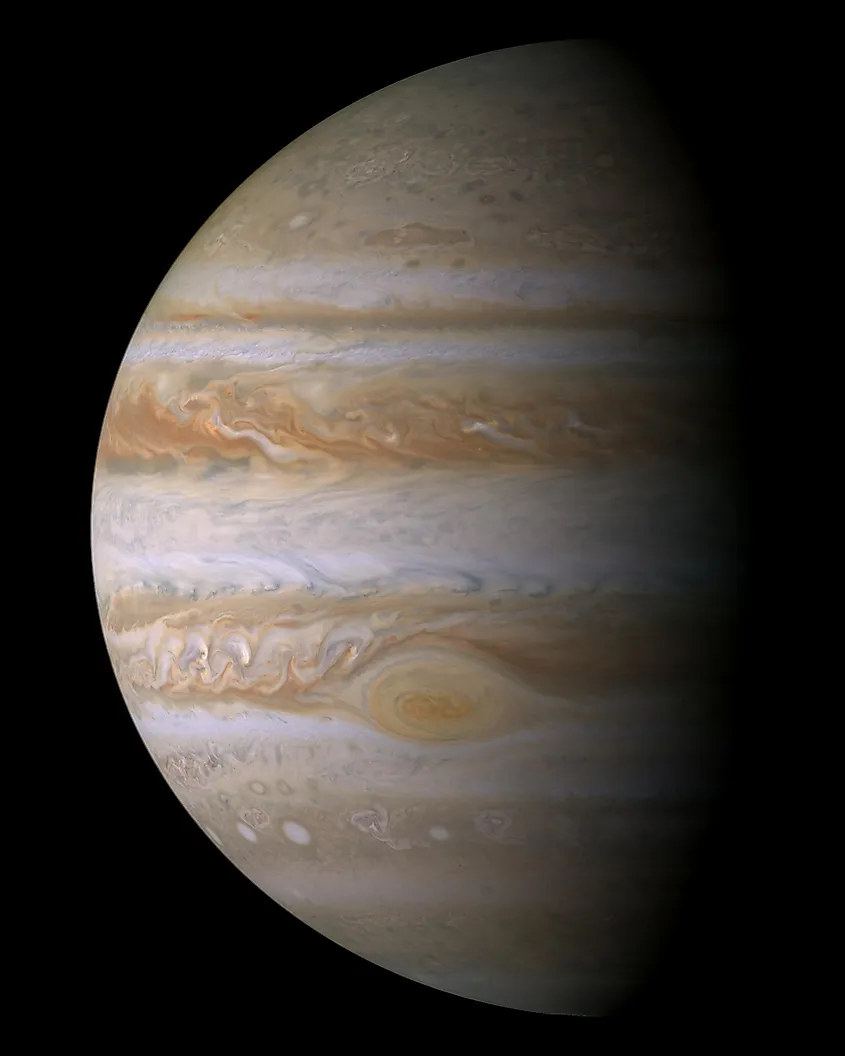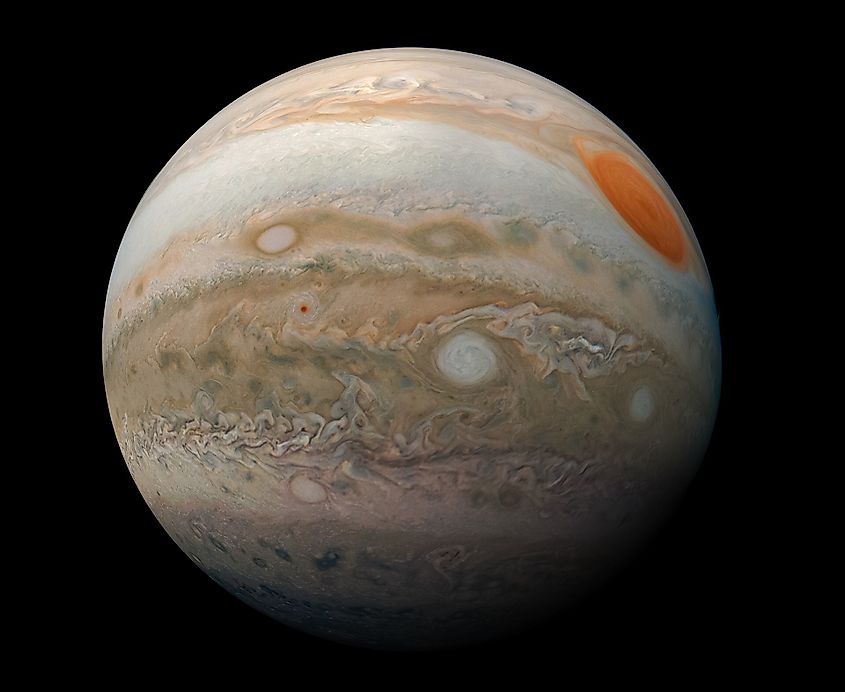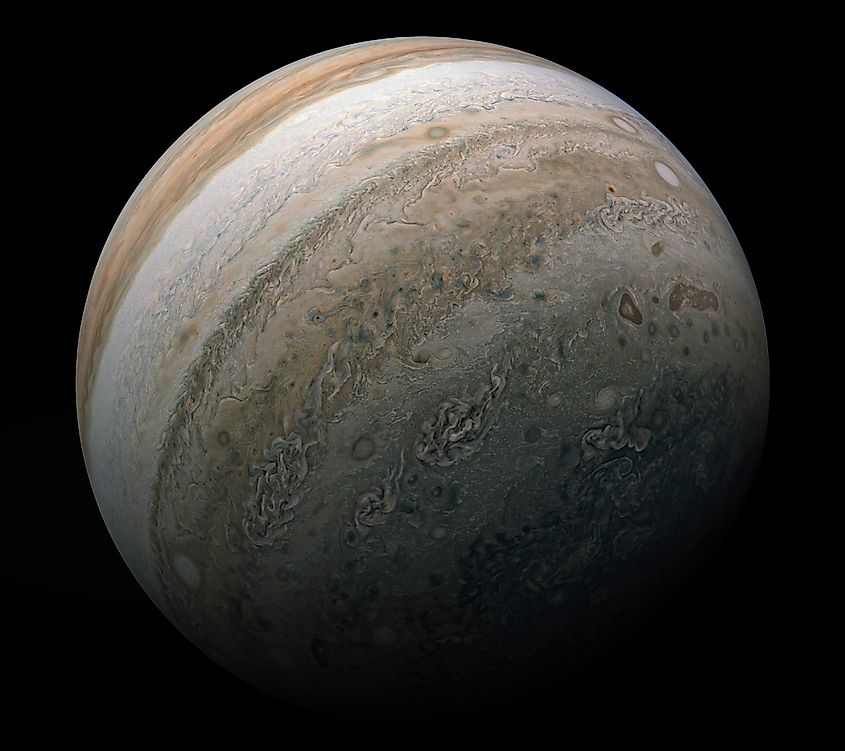
How Big Is Jupiter?
Of the eight planets in our solar system, Jupiter is both the largest and most massive of them all. In fact, Jupiter is so big that you could fit every other planet inside it and there would still be room leftover. Jupiter is also more massive than every other planet combined. Jupiter and the sun together account for over 99% of the total mass of the solar system. Just how big is Jupiter?
Jupiter And The Other Planets

Jupiter has a diameter of 86,880-miles (139,820-kilometres). The best way to understand just how gigantic that is, is to compare it to the other planets. For example, the Earth has a diameter of 7,917-miles (12,742-kilometres), which means that Jupiter is nearly 11 times larger than our planet. The only other planet that even comes close to Jupiter’s size is Saturn, the second largest planet in our solar system. Even then, however, Jupiter is noticeably larger. Saturn has a diameter of 72,364-miles (116,460-kilometres), and so Jupiter is still 1.2 times larger than Saturn. However, just knowing the diameter of Jupiter does not do this planet justice in terms of just how big it truly is. By volume, Jupiter is a staggering 1,300 times larger than Earth, meaning you could fit approximately 1,300 Earths inside Jupiter. Furthermore, Jupiter’s surface area is about 120 times greater than Earth’s, and by mass, Jupiter is 318 times larger than Earth. There is, however, one number that is smaller for Jupiter than it is for Earth, and that’s density. Despite Jupiter’s immense size, it is only about a fourth as dense as Earth. This is due to the difference in composition between Jupiter and Earth. Jupiter is primarily composed of the light elements, hydrogen and helium, while the Earth is composed mostly of rock and metal, materials that have a far higher density than lighter elements.
How Did Jupiter Get So Big?

Jupiter’s size is likely due to where it formed in the solar system. After the formation of the sun, lighter elements, such as hydrogen and helium, were pushed away from the sun and towards the outer solar system due to their lower weight. Meanwhile, heavier elements remained in the inner regions of the solar system. Lighter elements generally outnumber heavier elements by a vast margin, and so the amount of material in the outer solar system was far higher than in the inner solar system. This meant that planets could become much larger further away from the sun. Interestingly, when Jupiter first formed, it was likely a solid planet not much larger than Earth. However, due to a higher abundance of material, it simply kept growing. The growth process becomes exponential as more material increases the gravity of the planet, allowing it to draw in even more material. Eventually, Jupiter consumed all of the material in its orbit and became the largest planet in the solar system.
Center Of Gravity

Jupiter is the second largest gravitational source in the solar system after the sun. Interestingly, due to Jupiter’s immense gravity and distance from the sun, the center of gravity between the two objects actually exists outside the sun’s surface. Although we generally think of planets as orbiting the sun, they actually orbit the center of gravity between themselves and the sun. For most of the planets in our solar system, their gravity is too small for this to become noticeable, and nearly every planet orbits a center of gravity that exists at or near the sun’s core. Jupiter, however, is a different story, and the center of gravity between it and the sun actually exists outside of the sun itself. Thus, both Jupiter and the sun orbit this center of gravity. Jupiter’s gravity is so strong that it physically causes the sun to move.











